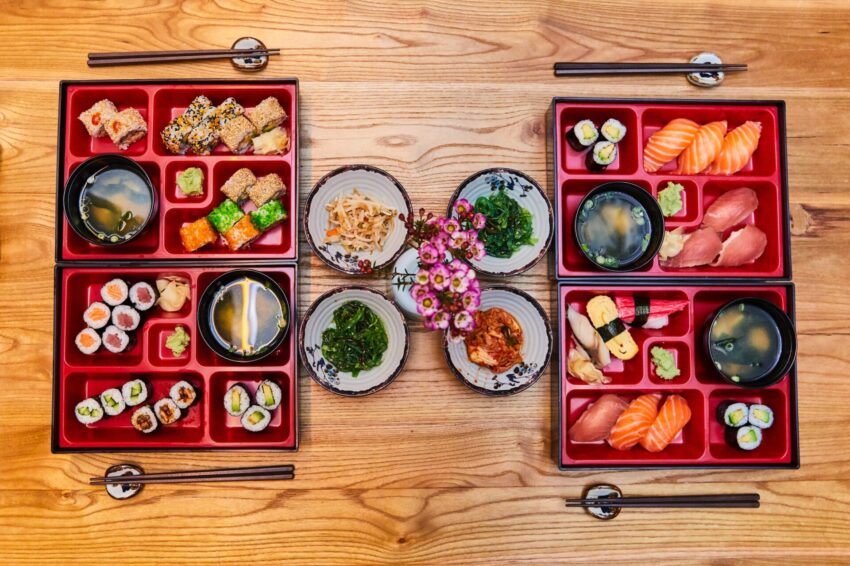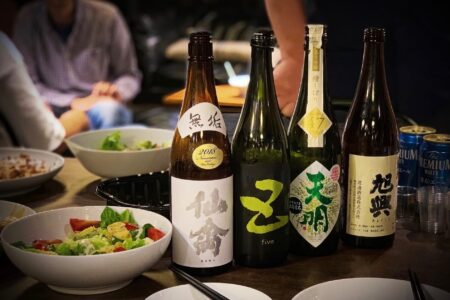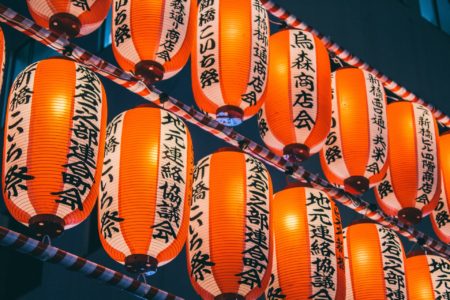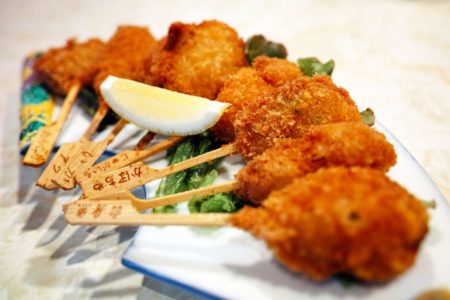Osechi: A New Year’s Tradition

Top Photo by kofookoo.de on Unsplash
Previous Version: Masaaki Komori used under the Creative Commons Attribution-ShareAlike 2.0 General License, via Wikipedia
Osechi-ryōri is one of the traditional foods of the New Year’s period in Japan. Starting from the Heian period, it is easily identified by the decorative stacked boxes (jūbako) it is served in. It is also well-known for the wide selection of foods contained within. Like some sort of super-bento box, osechi is all about variety. But did you know that each individual food item actually holds great significance? For those interested in (or those eating!) this annual tradition, here’s our guide to the symbolism behind some of the foods you’ll find in Osechi.
Daidai(橙)
A Japanese bitter orange, daidai means “from generation to generation” when written with different kanji (代々). It is symbolic of a wish for children in the new year.
Datemaki(伊達巻 or だてまき)
A sweet egg roll that mixes hanpen (fish cake) or mashed shrimp. The scroll-like shape is symbolic of the acquisition of knowledge & fashionable culture.
Tazukuri【田作り)
Small dried sardines or anchovies cooked to a dry crispiness in soy sauce and sugar. Long ago, farmers used dried sardines as a fertilizer for rice fields. An alternative name, Gomame, means “50,000 grains of rice”. Thus, this symbolizes the wish for a good harvest in the next year.
Kamaboko(蒲鉾)
Boiled fish paste i fashioned into long half-circles (it’s tastier than you’d expect!) The resulting shape, resembling that of a sun at daybreak, represents the first sunrise of the new year. Most kamaboko are pinkish-red and white; the red color is believed to prevent evil spirits, while white represents purity.
Kuro-mame(黒豆)
Sweet black soy beans representing good health. Mame is the word for bean, but it can also be used to describe someone who works diligently. Thus kuro-mame represent wishes for health and diligence.
Tai (鯛)
Tai, or sea bream, is a play on words derived from medetai, meaning “to celebrate.” It is eaten at weddings or when a child is born. It’s a symbol of celebration and often the centerpiece of Osechi, being the largest piece of food.
Ebi (海老)
Ebi (shrimp) symbolizes long life, due to the appearance (the bent back and long beard-like face of the shrimp is said to resemble a wise old man.) While smaller shrimp such as these are fairly common, some Osechi also feature larger Spiny Lobsters.
Nishiki-tamago(錦卵/二色玉子)
Steamed, layered egg slices that come in a variety of shapes. Circular, or the more block-like kind seen here. Tamago means ‘egg’, while nishiki refers to the costly silk brocades woven from multi-colored silk thread.
Gobo (ごぼう)
Burdock Root takes time to cut down, so you guessed it: it’s symbolic of strength and stability in life. A popular staple throughout Japanese cooking (Gobo Tempura is a must-try) its appearance in Osechi cooking feels very fitting.
Kuri-kinton (栗きんとん)
Candied chestnuts mixed with sweet potatoes, kuri-kinton is believed to bring about good fortune, as the color of the dish resembles gold. If you’re hoping to gain wealth in the coming year, make sure to eat some of this!
Osechi is traditionally prepared prior to New Year’s Day and then generally eaten during the following 3 days (stemming from an ancient belief that it was taboo to cook anything except zōni. On New Year’s Eve, toshi-koshi soba (年越し蕎麦) is eaten prior to the end of the year. It’s the perfect thing to follow that intense house-cleaning you did during Osouji!
Are you interested in cooking Osechi yourself? Recipes are all around the internet, and if you’re fortunate to have one nearby, ingredients may be found at specialty Asian supermarkets. While the elaborate boxes are part of the charm, they aren’t required for your own homemade Osechi. What really matters is the thought and care that goes into each dish.
よいお年を!
We here at MUSUBI thank you for checking out our blog for another year, and wish you the best for New Year’s Eve and for all of 2022! See you next year!
Photo Credits:
Top Photo by kofookoo.de on Unsplash
Previous Version: Masaaki Komori used under the Creative Commons Attribution-ShareAlike 2.0 General License, via Wikipedia
All other content (text) created by the original author and © 2021 MUSUBI by Borderlink
RELATED
-

5 Things You Should Know About Sake
Top Photo: Xtra, Inc. on Unsplash The world of sake can be daunting. When you first arrive in Japan you may b… -

At a Glance: Bon Festival
Top photo: Atul Vinayak on Unsplash This weekend in Japan will see the annual Bon Festival, also known as Obo… -

Say “Itadakimasu!” With These Delicious Dishes!
Top Photo: takedahrs on Pixabay Previously used photo: “Hiroshima-Style Okonomiyaki” by Ajay Sures…
PEOPLE

The MUSUBI Staff
Collaborative works put together by our many talented writers and editors!



